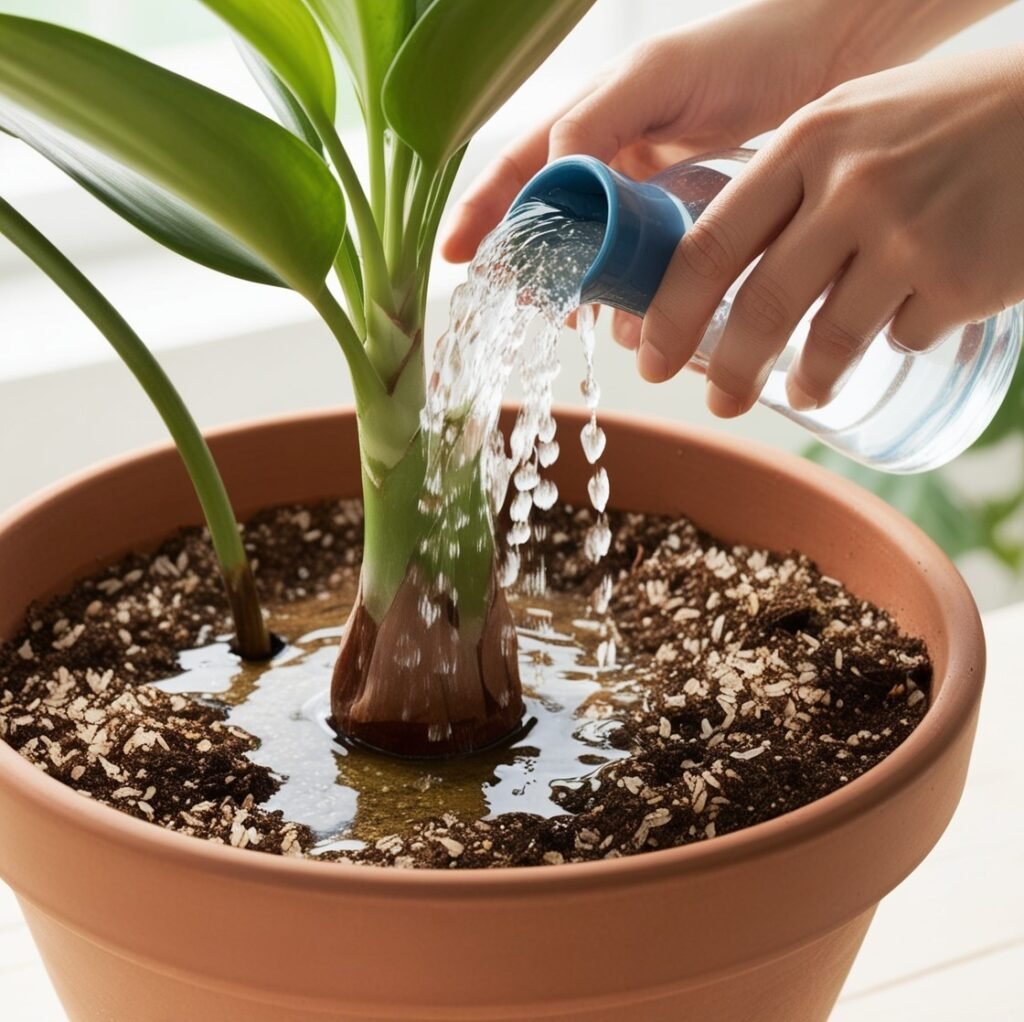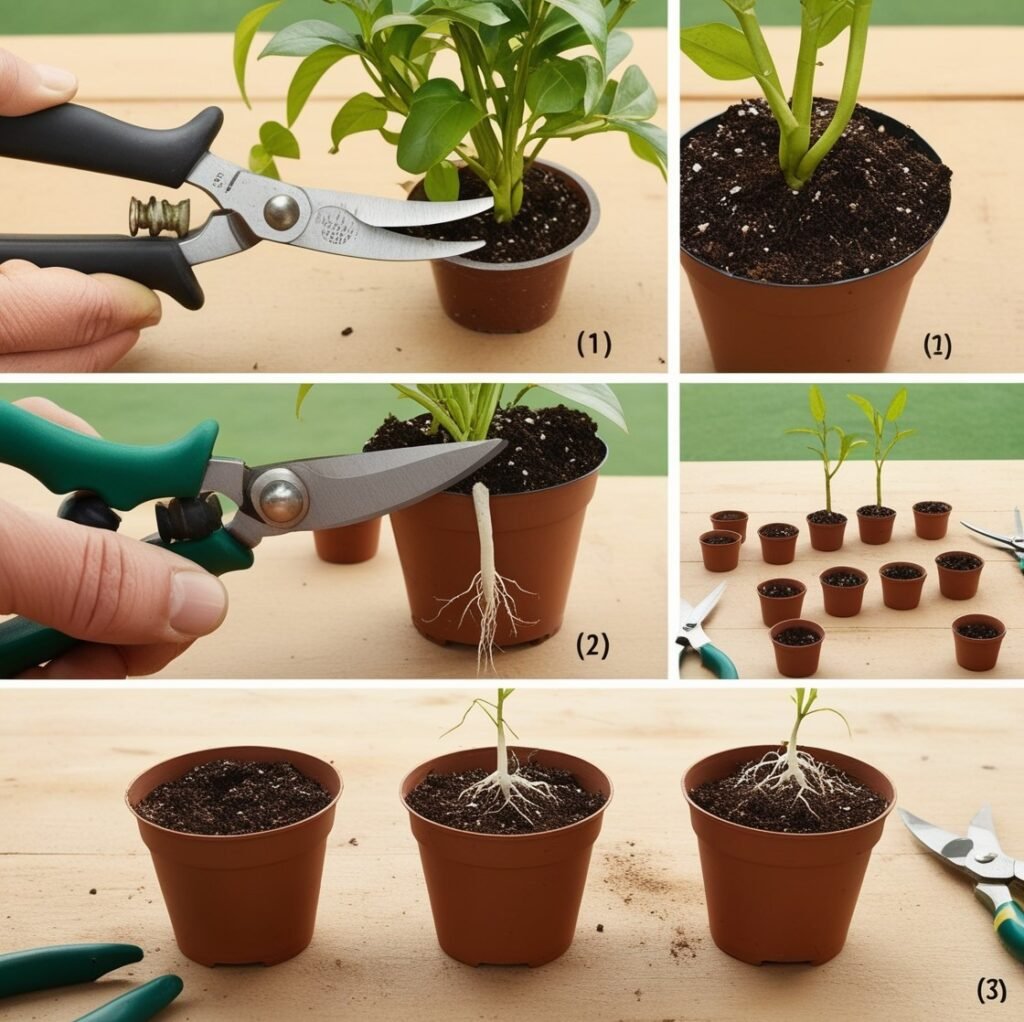
Its distinct leaves and will stand up well indoors. Irrespective of whether you are a amateur gardener or a prospective one with guts to tackle the plant Pamela, knowing the specifics in start options will help it live longer and more beautiful.
Here is the full guide on pamacrystial plant care and from the aspects of lighting, watering, pest control and propagation so that you can keep a healthily thriving Pamacrystial plant.
The Pamacrystial Plant
The Pamacrystial plant has shiny leaves and a compact bushy growth habit suitable for tabletops, windowsills or as an indoor statement piece in any room.
Nyway, the Pamacrystial plant is also a favorite among indoor gardeners due to its adaptive lifestyle to all kind of light conditions and also low maintenance needs.
Pamacrystial Plants and Their Light Needs
Macrystial plants are somewhat adaptable to lighting, however they prefer a more direct sunlight aspect. Let’s know!
- Light
Keep your Pamacrystial plant by an east or west-facing window, giving them as much indirect light as possible. Leaves getting burned from direct sunlight or growth slowing down with the release of color signals in leaves indicate that we are possibly under high light, low light conditions respectively.
- Low Light Adaptability
They are capable of handling lower light conditions but do need some moderate light every day to produce their spectacular foliage color and development.
- Artificial lighting
If natural light is not enough, you can use grow lights for plants, especially in winter. You can use LED grow lights set to anywhere between 10-12 hours a day for supplementary light and to keep the plant healthy and thriving in winter times when there are extended periods of very little sunlight.
During different seasons you will need to adjust its light because even the best place of your house has too little sunlight at some point during a year. Plants are starving for light if there is leggy growth or leaves become yellowish and lifeless.
How to water Pamacrystial plants: A solution between extremes

Pamacrystial plants enjoy regular watering, but ensure that the soil is kept damp, not sodden.
Water Once The Top Inch Of Soil Feels Dry: Water once the top inch of soil is dry to the touch. Once every 1-2 weeks is usually enough, but adjust accordingly with the climate and time of year.
- Do not Overwater
One of the biggest errors with Pamacrystial care is pouring water. Water accumulating in soil can cause roots to rot which is not good for the health of the plant. Make sure that the pot has drainage holes, and you should not let water accumulate at the bottom.
- Humidity Requirements
Pamacrystial plants grow best in moderate humidity levels. Use a humidifier near the plant, or place a shallow tray with water, filled with pebbles under the pot to create a humid micro-environment when air in your home is extremely dry.
This means a potting soil mix that prevents sogginess and a watering schedule based on the seasons.
Soil And Potting Mix For Pamacrystial Plants
A suitable potting mix is crucial for the well-being and development of your Pamacrystial plant. Here, I have tried to explain details for your kind consideration-
- Soil Mix: The most appropriate soil blend should be well-draining but still able to hold water.
- Soil: An amended standard potting soil with perlite or coarse sand The soil should be moist but rapidly draining, and the roots need to have access to oxygen and must not stay waterlogged.
- Repotting: Every 1-2 years repot your Pamacrystial plant in a fresh soil to allow the roots to grow and expand. The optimal timing for repotting is in spring, the plant’s growing season, when it can adapt to new soil conditions swiftly.
- Potting Container: Use a container that has enough room for a minimum of an inch on the root ball size, as well as one that has holes in the bottom to allow extra water to escape. Clay pots are best, because they can lose some of that excess moisture through the pot itself, preventing root rot.
The inclusion of organic compost in the soil mix will also give it a source of nutrients, ensuring that there is overall healthy growth and eliminating the need for chemical fertilizers.
Pests and diseases of pamacrystial plants Fertilizing pamacrystial plants
Applying fertilizer is key to encouraging vigorous growth and colorful leaves, particularly when the plant is growing strongly. Let’s discuss-
- Fertilizer: Fertilize your Pamacrystially plant every 4-6 weeks during the growing season with a balanced, water-soluble fertilizer. In the fall and winter, cut back or stop fertilizing altogether. The plant is dormant and will grow much slower.
- Fertilizer Type: Use a balanced fertilizer so that no one element gets overcharged. If you would like to dilute the fertilizer you can do so from half strength in order not to burn the roots and leaves.
- Slow-Release Fertilizers: These pellets can be added to the soil once at the start of the growing season, and are particularly easy to maintain. These pellets slowly break down and provide nutrients over time, allowing you to feed easy with very little effort.
A well-fertilized Pamacrystial plant gets all the nutrients it needs, and as a result, grows bushy and has brightly colored foliage.
Custom temperatyre and humidity needs

Pamacrystial plants, for the most part, are robust in temperature and do not have a problem living in your regular indoor climate.
- Best Temperatures: Fungal vines prefer temperatures of 65 to 75°F They will take a little cooler but long periods of exposure to below 50°F can cause stunted growth and even kill the leaves.
- Climate Control: Drafts, air conditioners and heating vents can put your Pamacrystial plant into shock; sudden differences in temperature can be very stressful for a plant.
- Humidity: Pamacrystial plants are indifferent and do well. While it isn’t necessary if your home has normal humidity, occasionally misting the leaves or using a humidifier will help keep leaves healthy and stop them from developing brown edges in extremely dry air conditions.
A constant, temperate and humid state promotes a balance in the environment for your Pamacrystial plant to flourish.
How to Prune and Maintain Your Plants for Better Growth
Prune regularly to keep them in shape, promote growth and prevent the Pamacrystial plant from getting too stemmy. Have a look!
- Timing: During early spring, when the growing season has not yet begun. Cut out any dead or damaged leaves and trim instancy stems to help it grow fuller.
- How to Prune: Make clean, sharp cuts with scissors or pruning shears just above a leaf node to encourage new leaves to grow from that point.
- Dusting on the leaves: Pamacrystial crops wide leaves may gather dust that obstructs light and limits photosynthesis. Clean the leaves once in a few weeks using a damp cloth.
Regularly pruning your Pamacrystial plant is the easiest way to help your pam Afro shine and grow a denser, more balanced growth shape.
Common Pests and Issues
Pamacrystial is resistant to other insects and pests, but it may attract common houseplant pests when the situation is not good.
- Aphids and Spider Mites
These extremely small pests may lead to yellowing or stippled leaves. To manage those pests, wipe impacted leaves with insecticidal soap or neem oil.
- Fungus Gnats
Fungus gnats are another consequence of overwatering or excessive high humidity; the adult flies lay eggs in moist soil. Try letting the soil dry out between waterings and using a sticky trap to minimize their numbers.
- Root Rot
Root rot is always caused by overwatering or poor drainage. One sign of the illness is leaves that turn yellow, which are also more likely to wilt. If you are concerned about root rot, take the plant out of its pot to check and remove any rotten roots, also replanting it in some nice fresh well-draining soil.
Even so, proper watering and frequent inspections for pests will keep most common issues away from your Pamacrystial.
How to propagate Pamacrystial plants?
One of the best things about having a Pamacrystial plant is being able to propagate it. The good news is that you can even do this at home, and it’s very satisfying too!
So, you will probably find yourself wanting more plants for your collection or a few to spread around town so that your friends are leaving with some on their way out the door.
To propagate succulents from stem cuttings you need: Take 4-6 inch stem cutting with at least two leaf nodes Water the cutting or put it in a draining soil, and keep wet until roots show up.
Division: Pamacrystials have the capability of being divided at root level when repotted, so they can easily be split up into smaller specimens. Gently break them up, and plant each piece in its own pot with fresh soil.
Propagation Medium: Using a well-draining soil or perlite and having the cuttings in indirect light can speed up rooting time and increase your propagation success rate.
By walking through these procedures you can grow fresh Pamacrystal plants very well and put some greenery in your indoor garden.
Conclusion
Pamacrystial good indoor garden is hardy and appealing with unusual leaves and simple care which is a great choice for beginners. If you provide enough light, water, soil, and nutrient to them they will grow healthy and the leave color would be bright.
Your Pamacrystial will flourish with the right pamacrystial plant care and live for years to come bringing a beautiful, natural presence by helping ground you in serenity.

